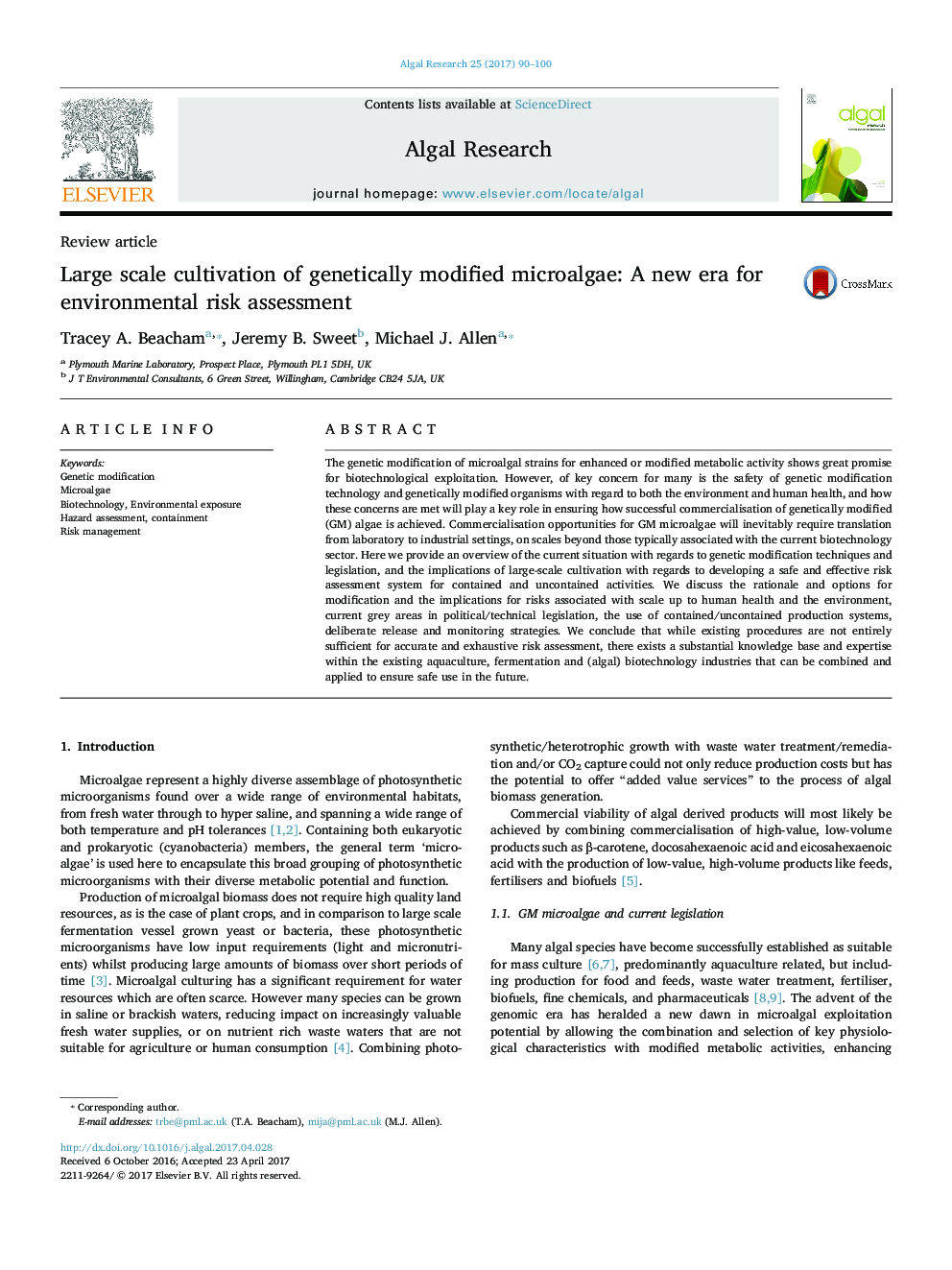| Article ID | Journal | Published Year | Pages | File Type |
|---|---|---|---|---|
| 5478356 | Algal Research | 2017 | 11 Pages |
Abstract
The genetic modification of microalgal strains for enhanced or modified metabolic activity shows great promise for biotechnological exploitation. However, of key concern for many is the safety of genetic modification technology and genetically modified organisms with regard to both the environment and human health, and how these concerns are met will play a key role in ensuring how successful commercialisation of genetically modified (GM) algae is achieved. Commercialisation opportunities for GM microalgae will inevitably require translation from laboratory to industrial settings, on scales beyond those typically associated with the current biotechnology sector. Here we provide an overview of the current situation with regards to genetic modification techniques and legislation, and the implications of large-scale cultivation with regards to developing a safe and effective risk assessment system for contained and uncontained activities. We discuss the rationale and options for modification and the implications for risks associated with scale up to human health and the environment, current grey areas in political/technical legislation, the use of contained/uncontained production systems, deliberate release and monitoring strategies. We conclude that while existing procedures are not entirely sufficient for accurate and exhaustive risk assessment, there exists a substantial knowledge base and expertise within the existing aquaculture, fermentation and (algal) biotechnology industries that can be combined and applied to ensure safe use in the future.
Related Topics
Physical Sciences and Engineering
Energy
Renewable Energy, Sustainability and the Environment
Authors
Tracey A. Beacham, Jeremy B. Sweet, Michael J. Allen,
